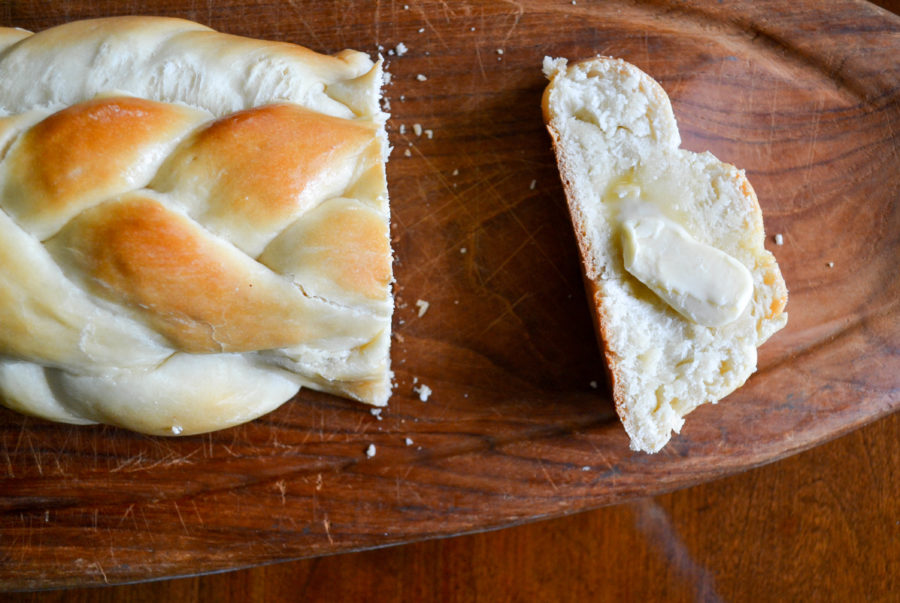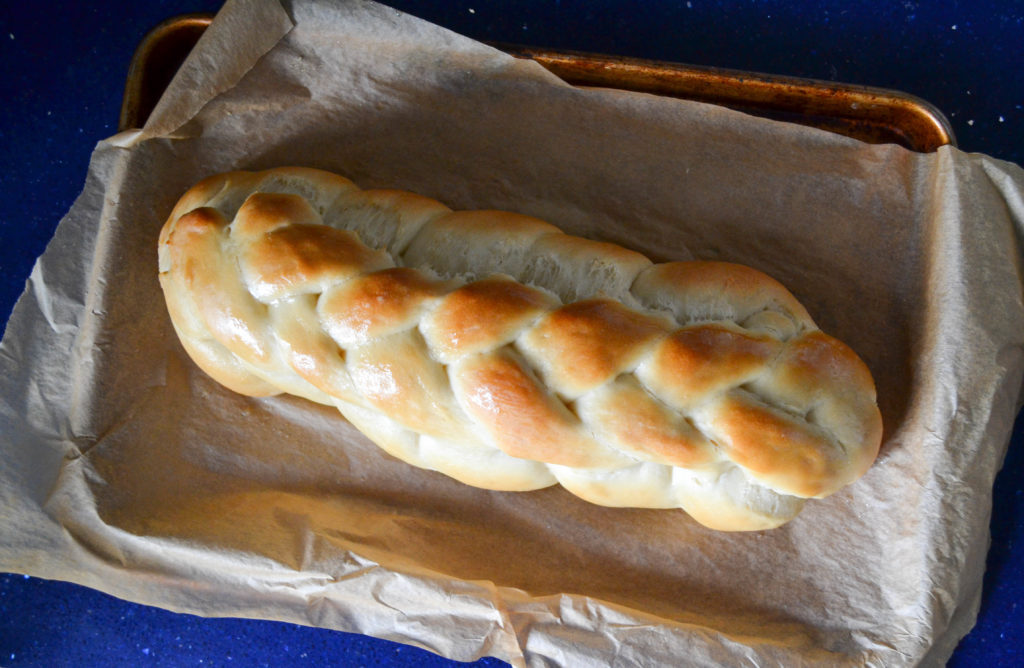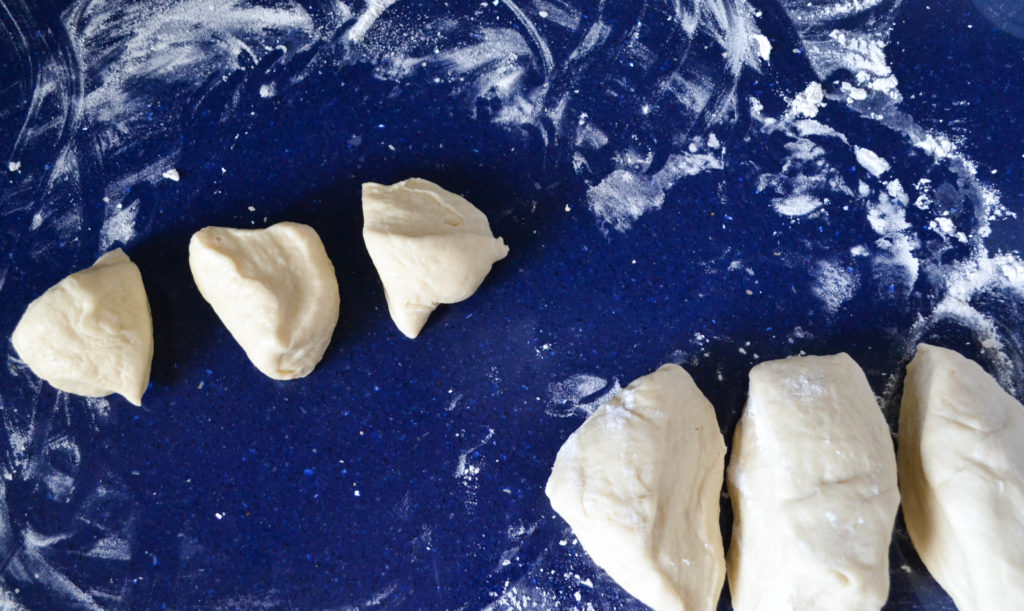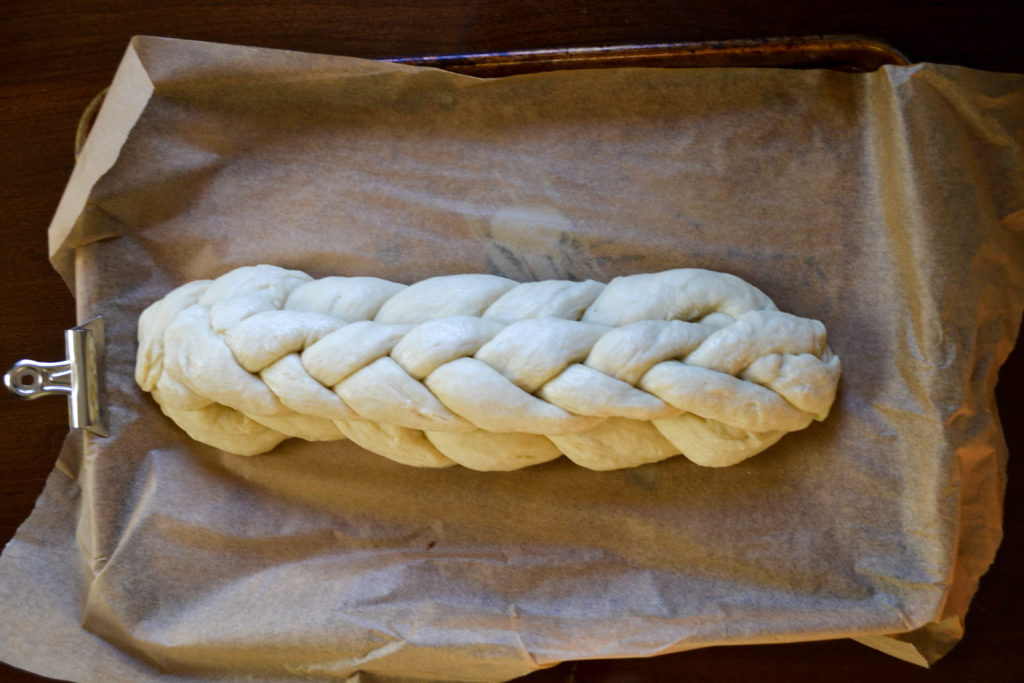One of the first Jewish foods I remember eating is . I associate challah with mingling at bar and bat s, a glass of grape juice in hand and a chunk of bread in the other, calculating how many times I could reasonably duck into the temple bathroom without looking suspicious.
I wanted to hide from the awkwardness of being 13 and the fact that temple never felt comfortable to me. My mom is Jewish and my dad is not, so my relationship with Judaism has always been rooted more in my stomach and attempts to find a religious identity than anything concerning actual religious observance. The challah was delicious.
When I was a little bit past age I attended a Passover with relatives on my mom’s side. It was a large group of friends and family and we passed a dozen dishes around several pushed-together tables (one was not large enough to fit all of us). I was transfixed by the elaborate food traditions: the brisket, the matzo ball soup, the seder plate. We read stories, sang songs, and ate and ate and ate. I learned that one of the wonderful things about Judaism and its many traditions rooted in food is its ability to bring people together.
I stopped eating meat, dairy, and eggs about seven years ago and can attest that eating a vegan diet creates a different but similar discomfort I remember feeling as a preteen. If you decide to follow this diet, you will be everyone’s least favorite friend when it comes to picking a place to eat dinner, and you basically need to get used to packing your own Thanksgiving meal every year. One of the reasons I write a vegan blog is to share recipes and stories to bridge that gap between people who choose to eat less meat (or dairy or eggs) and those who choose to eat all of the meat and dairy and eggs.
The Nosher celebrates the traditions and recipes that have brought Jews together for centuries. Donate today to keep The Nosher's stories and recipes accessible to all.
When I started following a vegan diet I was pleased to learn that most bread is naturally vegan — challah, of course, is one of the exceptions. After going years without challah I decided to try my hand at a loaf like the ones I remember so well. I found the fluffiness was difficult to replicate. The first time I tried it, I didn’t give the yeast enough time to rise and it ended up dense and doorstop-like. After a few more tries it turned out pretty great.
Ingredients
3 - 3 ¼ cups unbleached all-purpose flour
¼ cup sugar
1 envelope instant yeast (about 2 ¼ teaspoons)
1 ¼ tsp salt
4 Tbsp vegetable oil or refined coconut, melted (Note: If using coconut oil, it’s important to use refined for a mild flavor.)
½ cup plus 1 Tbsp warm water
1 Tbsp maple syrup or agave nectar
1 tsp poppy seeds or sesame seeds (optional)
Directions
Whisk together 3 cups of flour, sugar, yeast, and salt in medium bowl.
Mix together melted coconut oil and 1/2 cup of water in the bowl of a standing mixer with dough hook attached. Add the flour/yeast mixture to the wet mixture slowly. Knead at low speed until a dough ball forms, roughly 5 minutes. Add the remaining 1/4 cup flour a bit at a time. The goal is to add just enough to prevent the dough from sticking to the sides of the bowl. Whisk liquid sweetener (maple syrup or agave) with 1 Tbsp of water and set aside.
Oil a large bowl lightly with coconut oil. Transfer the dough to the bowl, rolling the dough around gently to coat it with oil. Cover with plastic wrap and let rise in warm place until doubled in size, 1 1/2-2 hours. Gently press dough to deflate, cover with plastic wrap, and let rise until doubled in size again, 45-60 more minutes.
Lightly grease a large baking sheet and set aside.
Lightly flour a counter surface and transfer the dough to the floured surface. Divide dough into 2 pieces, one roughly half the size of the other. Divide both the large and small piece into 3 equal pieces (you will have 3 large sub-pieces and 3 small sub-pieces).
Roll each piece into a roughly 16-inch snake. Line up the 3 large snakes of dough side by side and pinch them together at one end. Lay the left-side snake over the center one. Take the right-side snake and lay it over center one. Repeat until pieces of dough are entirely braided, then pinch those ends together. Place the braid on the prepared baking sheet.
Take the three smaller pieces of dough and repeat the process of rolling into snakes and braiding. Brush a bit of the maple-water mixture on top of the large braid and place the small braid on top of the larger braid. Loosely drape a piece of plastic wrap over the top and let rise in warm place for 30 minutes.
Preheat oven to 375 degrees. Brush the loaf with the maple-water mixture and place in the oven. Bake for 30 to 40 minutes, until golden brown on top. Cool loaf completely and serve with desired spreads.







